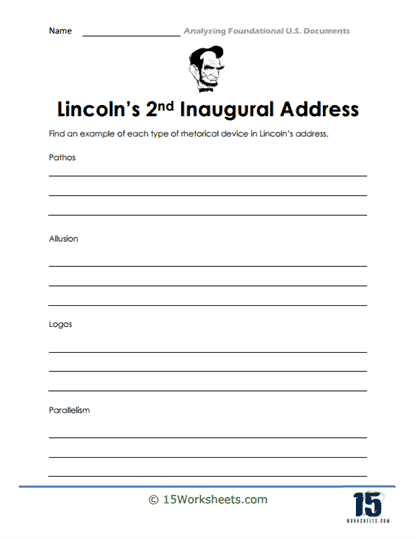Lincoln’s 2nd Inaugural Address

Worksheet Description
This worksheet is dedicated to analyzing President Abraham Lincoln’s 2nd Inaugural Address through the lens of rhetorical devices. Students are tasked with identifying specific examples of four prominent rhetorical techniques—pathos (appeal to emotion), allusion (indirect reference), logos (appeal to logic), and parallelism (similarity of structure in a pair or series of related words, phrases, or clauses)—as employed in Lincoln’s address. The activity aims to deepen comprehension by prompting learners to sift through the text, pinpointing instances where Lincoln used these devices to enhance his message. The depiction of Lincoln at the top further cements the focus on his role as a masterful communicator during a pivotal time in American history.
The primary goal of this worksheet is to foster students’ analytical skills, particularly in the realm of rhetoric and communication. By spotlighting key rhetorical techniques, the exercise helps students understand the tools that effective communicators employ to persuade, inform, and inspire their audience. Furthermore, by examining a historically significant speech like Lincoln’s 2nd Inaugural Address, learners gain insights into how leaders use language to address complex and sensitive issues. Ultimately, the worksheet aims to produce students who are not only adept at analyzing historical documents but also appreciate the nuances and power of language in shaping public discourse.
